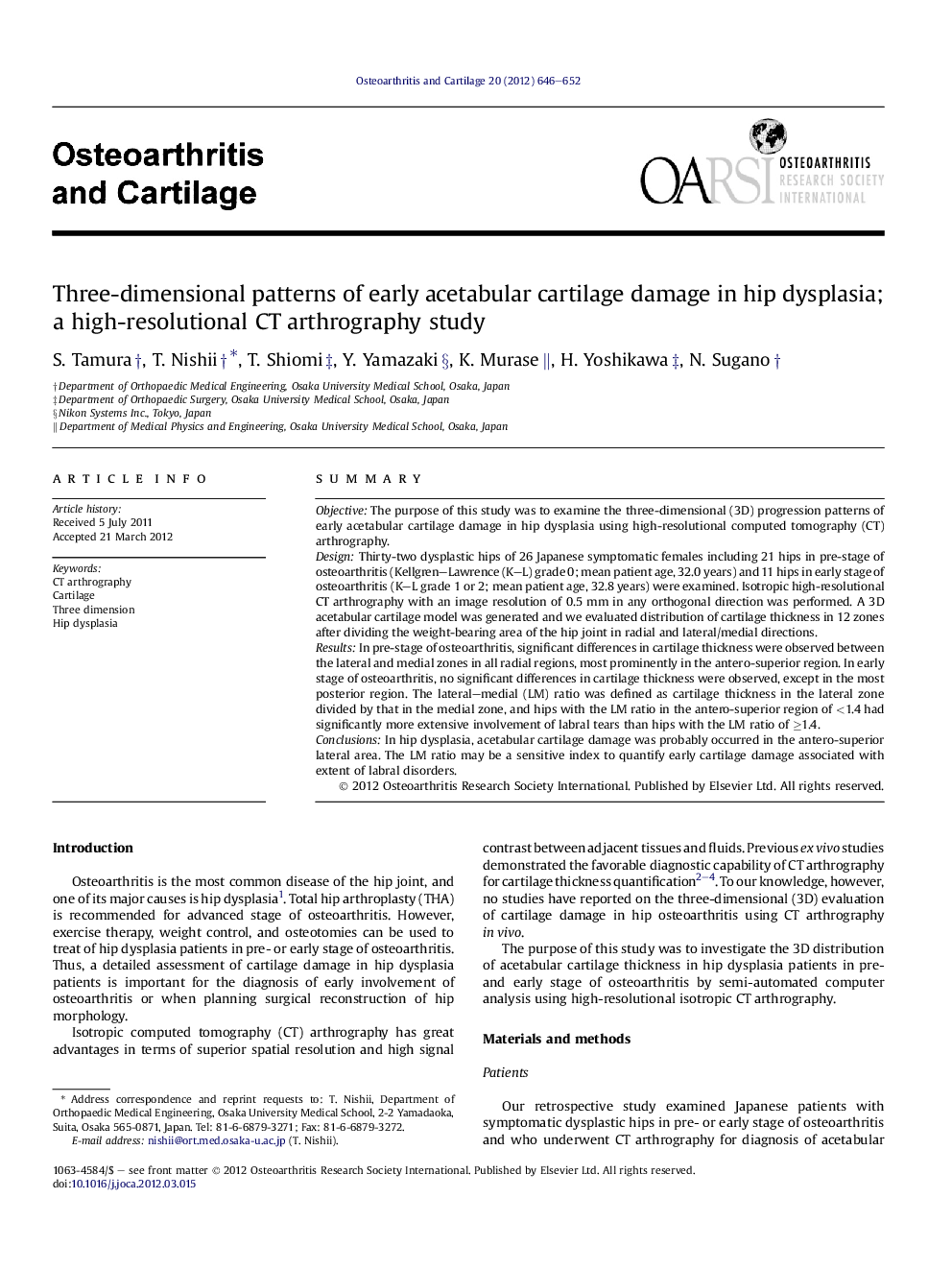| Article ID | Journal | Published Year | Pages | File Type |
|---|---|---|---|---|
| 3379926 | Osteoarthritis and Cartilage | 2012 | 7 Pages |
SummaryObjectiveThe purpose of this study was to examine the three-dimensional (3D) progression patterns of early acetabular cartilage damage in hip dysplasia using high-resolutional computed tomography (CT) arthrography.DesignThirty-two dysplastic hips of 26 Japanese symptomatic females including 21 hips in pre-stage of osteoarthritis (Kellgren–Lawrence (K–L) grade 0; mean patient age, 32.0 years) and 11 hips in early stage of osteoarthritis (K–L grade 1 or 2; mean patient age, 32.8 years) were examined. Isotropic high-resolutional CT arthrography with an image resolution of 0.5 mm in any orthogonal direction was performed. A 3D acetabular cartilage model was generated and we evaluated distribution of cartilage thickness in 12 zones after dividing the weight-bearing area of the hip joint in radial and lateral/medial directions.ResultsIn pre-stage of osteoarthritis, significant differences in cartilage thickness were observed between the lateral and medial zones in all radial regions, most prominently in the antero-superior region. In early stage of osteoarthritis, no significant differences in cartilage thickness were observed, except in the most posterior region. The lateral–medial (LM) ratio was defined as cartilage thickness in the lateral zone divided by that in the medial zone, and hips with the LM ratio in the antero-superior region of <1.4 had significantly more extensive involvement of labral tears than hips with the LM ratio of ≥1.4.ConclusionsIn hip dysplasia, acetabular cartilage damage was probably occurred in the antero-superior lateral area. The LM ratio may be a sensitive index to quantify early cartilage damage associated with extent of labral disorders.
